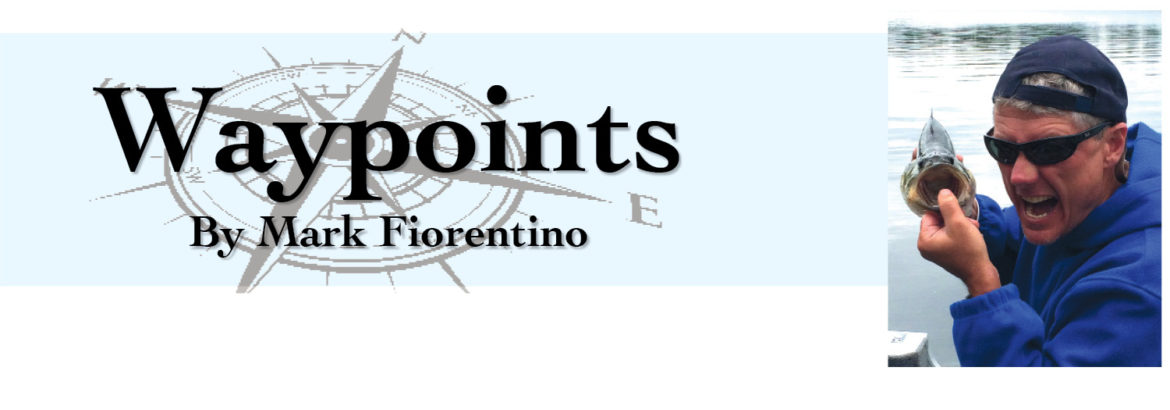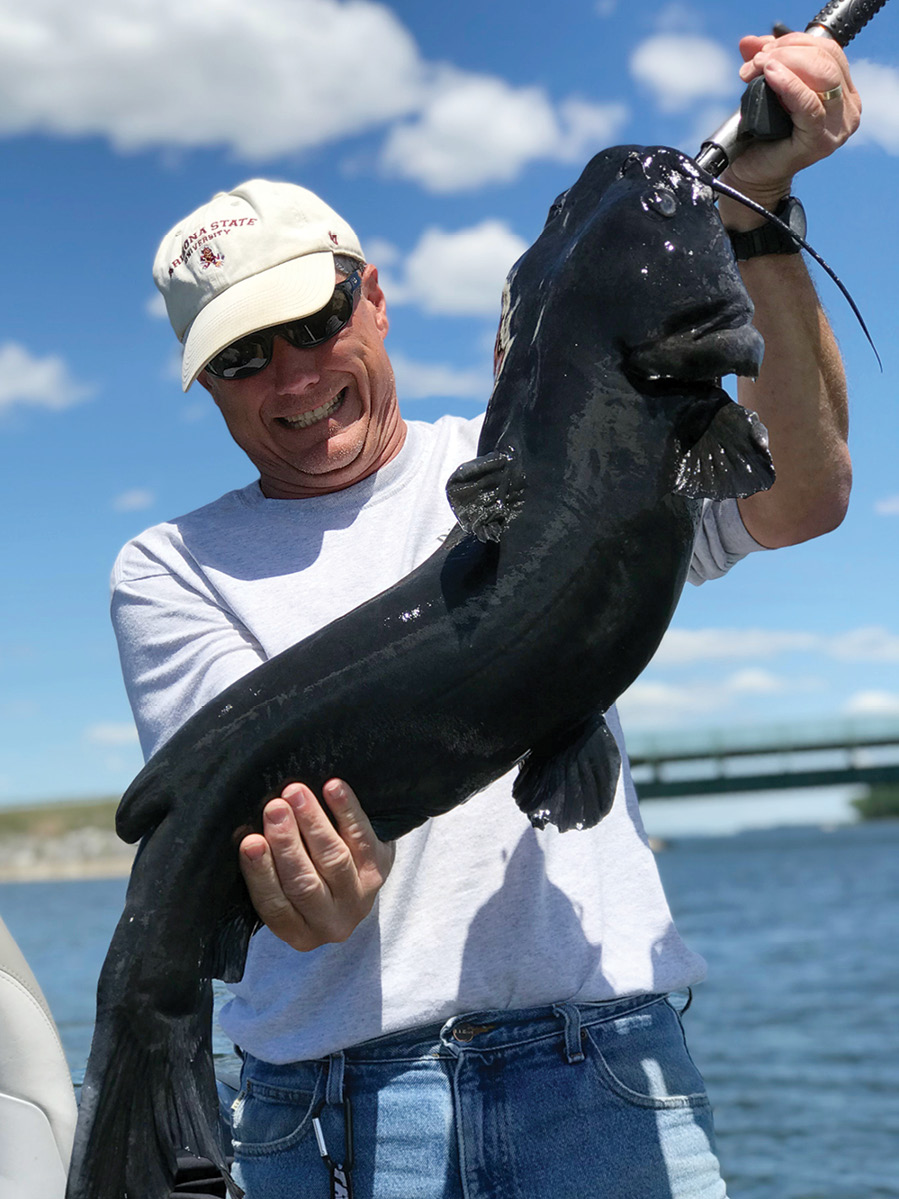 We were on our way to Lake Champlain, a trip we take every year, when Dave said to me: “It’s time for you to get a big-boy reel. I know you like the simplicity of your Zebcos, but the new baitcasters are being advertised as essentially tangle proof.”
We were on our way to Lake Champlain, a trip we take every year, when Dave said to me: “It’s time for you to get a big-boy reel. I know you like the simplicity of your Zebcos, but the new baitcasters are being advertised as essentially tangle proof.”
“What are you talking about?”
I was surprised Dave was making this pitch again. When we first started fishing together, he, like most, made fun of my Zebco reels. But after years of watching me catch fish, he’d mostly given up trying to convince me to change. He’s even borrowed one from time to time when, out in the boat, some disaster has struck every reel he brought on board.

My trusty Zebco rod.
“You need a reel with more muscle, especially when we fish places like Lake Champlain,” Dave noted. “It’s only a matter of time before you hook into a fish big enough to burn up the drag system in those Zebcos. You’ll have no chance to land a really big fish.”
Dave was right about one thing: Lake Champlain is home to some big, nasty fish. To see an example of what I’m talking about, Google “Lake Champlain Giant Fish.”
“I’m not worried about it. The drag systems work fine. I’d put my Zebcos up against any fish in the lake.”
Neither of us had any idea how much my boasting would be put to the test.
“Ok, Louie. I need you to float casually a couple of inches from the bottom. No burying yourself in the weeds, and no clamping onto my line.” It was our second day on the lake, and I was giving a pep talk to my bait, a two-inch live crayfish I had just hooked through the tail.
We were in the middle of one of those streaks. Nothing I did worked. And worse, everything Dave did was magic. Cast after cast I came up empty. No matter what I tried, I couldn’t coax even the lightest bite. Meanwhile, Dave caught something on seemingly every cast. He even landed a four and half pound smallmouth bass, despite the fact that it twice leaped clear out of the water and despite me “accidentally” whacking it in the head with the landing net.
Naming and talking to the bait is one of my go-to methods for changing bad luck. So, there I was encouraging Louie to do his best.
I cast Louie out and waited. And waited. And waited some more. Dave landed three more fish, including another smallmouth well over three pounds. I reeled in, and sure enough, Louie was holding on to my line with one of his claws. This is bad for at least two reasons: it makes Louie look unnatural in the water (picture him standing on a tiny crayfish train station, holding on to a pole with one claw and waiving with the other as the train departs); and it makes it hard for a fish to take Louie into its mouth without first feeling the line.
Louie was clearly not cooperating. I gripped the eye of the hook between my left thumb and forefinger and began my lecture:
“Louie, don’t make me pull off your claws. You know I don’t want to do it, but … AAAGGG.”
Louie had reached back behind his head with his free claw and pinched the meaty part of my thumb. In an instant, Louie went from being uncooperative to being downright unpleasant. I shook my hand and Louie lost his grip on both my line and my thumb. I laid my rod down, letting him hang over the side of the boat, inches above the surface.
As I stared into the water contemplating Louie’s fate, I saw something unusual on the bottom. “Hey, that’s a tire. And there is a giant fish sitting over the top of it.”
“It’s huge,” Dave said. “Is it a sheepshead?”
As we were debating what it was, the fish swam away. I was about to turn my attention back to Louie when I looked closer at the tire. It was a truck tire, probably two and a half feet across. And there was another fish. This one was positioned so that most of its body was inside the tire, where the rim would go. But you could clearly see a pectoral fin, half of a huge round head and the occasional flick of a big tail fin.
“Look at that, Dave. There’s another fish circling slowly around inside the tire, and its head nearly reaches its tail. That is a big catfish. You should try to catch it. Don’t they eat ….”
I was way ahead of him. “Oh Looo-eee.”
This was going to be tricky. I needed to be able to see the tire in order to get Louie down into it. The water was relatively calm but the boat was drifting slowly and I would only have a short window to make an effective cast.
I cast Louie out a few feet beyond the tire but gave him too much line. Louie spread out to his full length and width and surfed past the tire into the rocks beyond. I cast again, this time with just the right amount of line. The current took Louie into the center of the tire.
“Louie’s in,” I shouted. “He’s in the hole.”
I let out a little line to avoid having Louie pulled out of the tire as the boat drifted. Before long, I felt what I thought was a bite. I jerked the tip of my rod straight up. Nothing.
“I missed him. Poor Louie.”
To my utter shock, Louie was still neatly hooked when I reeled in. He looked extremely angry, but otherwise unscathed.
On my third cast, Louie landed on the side of the tire. He began crawling away from the center, towards the tread.
“Not that way, Louie. You have to get into the tire. Turn Louie, turn.”
Louie wasn’t interested in turning, so I jiggled the end of my rod. Louie fell backwards into the tire.
“Louie’s back in the hole!”
Again I let out some line and I felt some tension. But this time it was different. It was like someone had tied a bowling ball to the end of my line. No tap. No tug. Just dead weight. I stayed composed, counting to three before simultaneously turning the crank of my reel and sweeping the rod to the right.
“Fish on!” I’ve got him!”
“Don’t horse him. Let him take line but not too much. How much line does that reel hold? He’s going to burn up your drag for sure.” Dave sounded both ecstatic and panicked.
As I was taking all of this in, two things occurred to me. First, this was indeed a big fish, probably my biggest ever. Zebco or no Zebco, landing him would take both skill and luck. Second, my luck appeared to have changed for the better. If in the seconds after I hooked him, the fish had gone down into the tire or under the boat, my line would have broken for sure.
Instead, he swam slowly up, out of the tire and then slowly in a straight line away from the front of the boat. This allowed me to fight him from the flat deck where I had room to maneuver and it let me gauge when to give him line and how much.
My best hope was to keep him in a position where he was essentially towing the boat. This would tire him out to the point where I could reel him in without risk of breaking the line.
It wasn’t easy. Initially, I needed to give him enough line to allow him to turn the boat. When I first hooked him, we were pointed to the shore and shallow water. At the same time, I needed to keep enough pressure on him to prevent him from getting too far out ahead. If that happened, he would likely use the slack to entangle himself in the structure that existed everywhere.
Using my left thumb, I turned the wheel on the top of my Zebco to loosen the drag.
ZZZZTTTT. The reel whined as the fish began to take line.
In the back of the boat, Dave shouted: “I don’t like the sound of that. I’ll get us moving with the paddle so he doesn’t break the line.”
I silently agreed with Dave. The fish was putting too much strain on the line. I loosened the drag some more.
Zzzttt. Better, but still not smooth enough. I loosened one more time.Zzt. That’s where I needed him putting steady pressure on the line, but with the reel ready to give if something changed quickly.
Dave’s paddling had worked. Pointed in the right direction, the fish was now slowly pulling us around deeper water. I occasionally had to reel him in a little and pull him away from trouble, but things went smoothly. Until the end, that is.
The fish pulled us for ten minutes, then fifteen. Just as I was beginning to wonder how long he could last, I felt him slow down. Now I had to work the drag in reverse, gradually tightening it as I brought him in. If I left the drag too loose, I wouldn’t be able to control him.
After about five minutes of tightening, then pulling, tightening and pulling, I had him near the boat. The drag was tightened down fully. If the fish took off now, the reel wouldn’t release any line.
“There he is, Dave. Get the net ready.”
“Oh my. It’s bigger than I thought. It won’t fit in the net.”
“Just be ready. All we need is his front part in the net. He’s tired enough that we can muscle him aboard.”
You could hear the stress in our voices and the smallest bit of doubt.
As Dave eased the net into the water, the fish must have sensed his last chance. He dove suddenly, heading under the boat. The drag locked and my pole bent dramatically. This was the moment of truth. I needed to release the drag just enough to avoid the line breaking but not enough to let him get under us.
“He’s going to break the line for sure,” Dave lamented.
I loosened the drag a tiny bit. The tension on my pole eased a little and I was able to pull the fish away from the boat. He made a short effort to swim away, then turned and sat motionless just below the surface.
Dave quickly eased the net under him, a full third of his length outside the net.
“Now,” I said, and Dave swung him aboard.
We moved quickly to take some pictures and weigh the fish. He was a little over eighteen pounds. My largest fish to date.
“Wow,” Dave said after we had released him. “It took all of your experience to land that fish and a remarkable performance by your Zebco.”

Submitted photos
Fiorentino and his Vermont channel catfish.